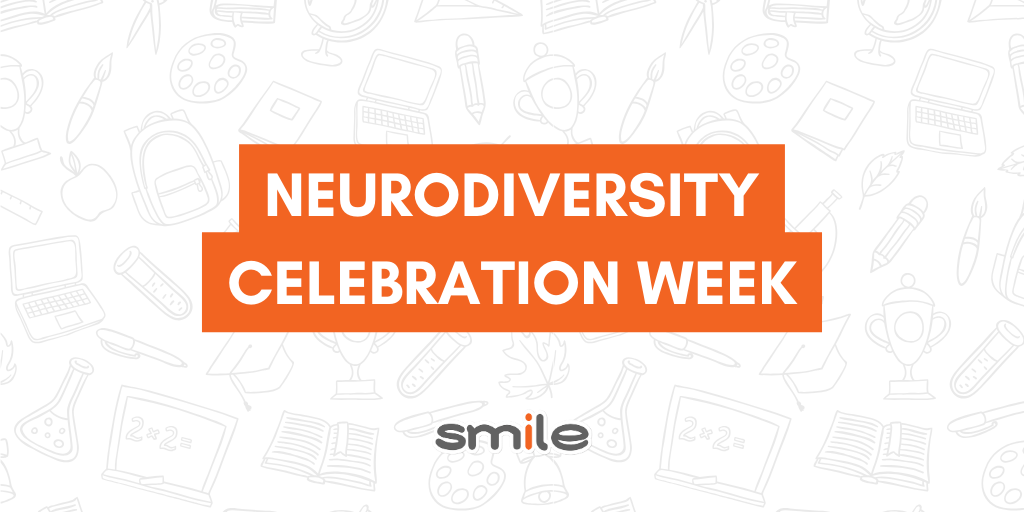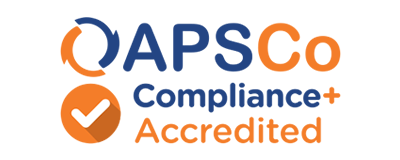Blog
Are you a supply teacher or teaching assistant looking for some help and advice? If so, you are in the right place. Our blogs offer tips and tricks on everything from classroom management to interview tips and support, along with day in the life case studies from real supply teachers, ECTs and cover supervisors. They also give you an insight into what working for Smile is like, the ways which we support local communities and charities and the training and events that we offer.
For more good stuff like this, follow us on social media - you can find us on Facebook, Instagram, Twitter and LinkedIn. Or pick up the phone and give us a call.
Did you know that approximately 15-20% of the population has a neurological difference? This week is Neurodiversity Celebration Week, and there’s no better opportunity for schools to explore how they could extend this inclusion to their neurodiverse learners.
What is Neurodiversity?
Many people use the word neurodiversity as an umbrella term that encompasses neurological differences, such as dyslexia, dyspraxia, dyscalculia, autism and ADHD. According to Neurodiversity Celebration Week, these differences in the way we think, move, process information and communicate should be given a “balanced view of the individual’s unique strengths and weaknesses”, rather than being labelled with a deficit or disorder.
Neurodiversity Celebration Week states that many challenges faced by neurodivergent people are actually “more to do with the environment and systems they are placed in, often designed by a majority (neurotypical) population”. For example, many children with ADHD find sitting still at their desk very challenging. If classrooms and lessons were designed to accommodate those who learn better while having the freedom to move around, this might not have ever been a challenge in the first place.
Why Should We Celebrate Neurodiversity?
Now here’s an easy question to answer! The reality is, every person is different. Different styles of thinking are so important to society – if everyone thought the same way, then the world would be a very boring place.
All neurodivergent children (and adults!) have a unique set of strengths and weaknesses. However, many of these strengths and unique perspectives can often be overlooked, as society tends to focus more on the challenges faced by children who are neurodivergent.
For example, according to Lexxic, a notable strength of autistic individuals is “an ability to focus intensely on a particular task or topic. This ability, known as hyperfocus, enables many autistic individuals to become experts in their chosen field, and to produce work of a consistently high standard.” However, by discouraging this ability, an autistic person might consider this a weakness rather than a strength.
How Can Schools be More Inclusive of Neurodivergent Pupils?
Everybody has individual strengths and weaknesses, but there are specific ways schools and teachers can support neurodivergent children, celebrate their strengths and help them flourish. We’ve chatted with a few members of our team who are neurodivergent themselves (and have teaching experience!) to share some tips on some of the changes you could be making.
1. Place a focus on classroom routines
By ensuring routines are adhered to, you can support students with ADHD in staying on task. Not only this, but routines in general are often very important for autistic children, so by keeping certain things the same each day, you’re well on your way to a neurodivergent-friendly classroom. For example, homework could always be written on the board at a similar time each day.
2. Allow for more movement
Having to sit still for extended periods of time can be really uncomfortable or even feel impossible for people with ADHD. By allowing for movement, such as fidgeting or even getting up from the desk to walk around, you can help children with ADHD feel a lot more supported with their needs. They might find they only need permission to play with a fidget toy at their desk, but allowing for movement can be really helpful in reducing stress and boredom in the classroom.
3. Positivity is key!
Many autistic people and people with ADHD can struggle immensely with the feeling of rejection from negative reactions. By providing positive feedback as much as you can to your students, you’ll encourage your whole class to succeed, and remind them that they are valuable, talented and unique. Not only this, but by providing unique and consistently positive feedback to children with dyslexia, dyspraxia or dyscalculia, you could very well turn a day around for a child who has been struggling recently.
4. Make sure you prepare for transitions
Many neurodiverse people struggle with transitions. You can help support children who struggle with transitions by maintaining transparency with your class about what’s coming next. It’s a good idea to give as much notice as possible for changes that are happening in the school day, and remind students regularly that a transition is due to happen.
5. Examine your seating plan again
It’s important to talk to your students about where they feel most comfortable sitting, in order to help boost their feelings of safety and ability to focus in the classroom. Not only this, but a child might find it helpful to be closer to the door, have more legroom to move around or be closer to you when you’re teaching so they’re able to feel fully focused or access the tools they need without having to call you over to the back of the room.
6. Multisensory learning
By giving children more than one way to learn can be hugely helpful for those who are neurodivergent. This can include things like videos, flashcards and other learning tools that involve different senses. This can take the stress away from reading numbers and letters on a page or screen, helping children with dyslexia or dyscalculia use their strengths and different ways of thinking to learn something new.
How Else Can My School Support Neurodivergent Children?
There are so many ways you can celebrate those with different thinking styles in your school, and adapting lessons and school processes is just the beginning. Celebrating neurodiversity doesn’t have to be confined to just one week – so you can use these resources from Neurodiversity Celebration Week all year round.
Add a comment:
Blog Categories
Latest Blogs
Celebrating Volunteers' Week at Smile Education
Smile Education Begins Strategic Recruitment Partnership with Bordesley Multi Academy Trust
Netflix’s Adolescence: What Safeguarding Lessons Can We Learn?
From Graduate to Director: Kash’s Career at Smile Education
A Complete Guide to SEN Terms and Phrases for Teachers in 2025












